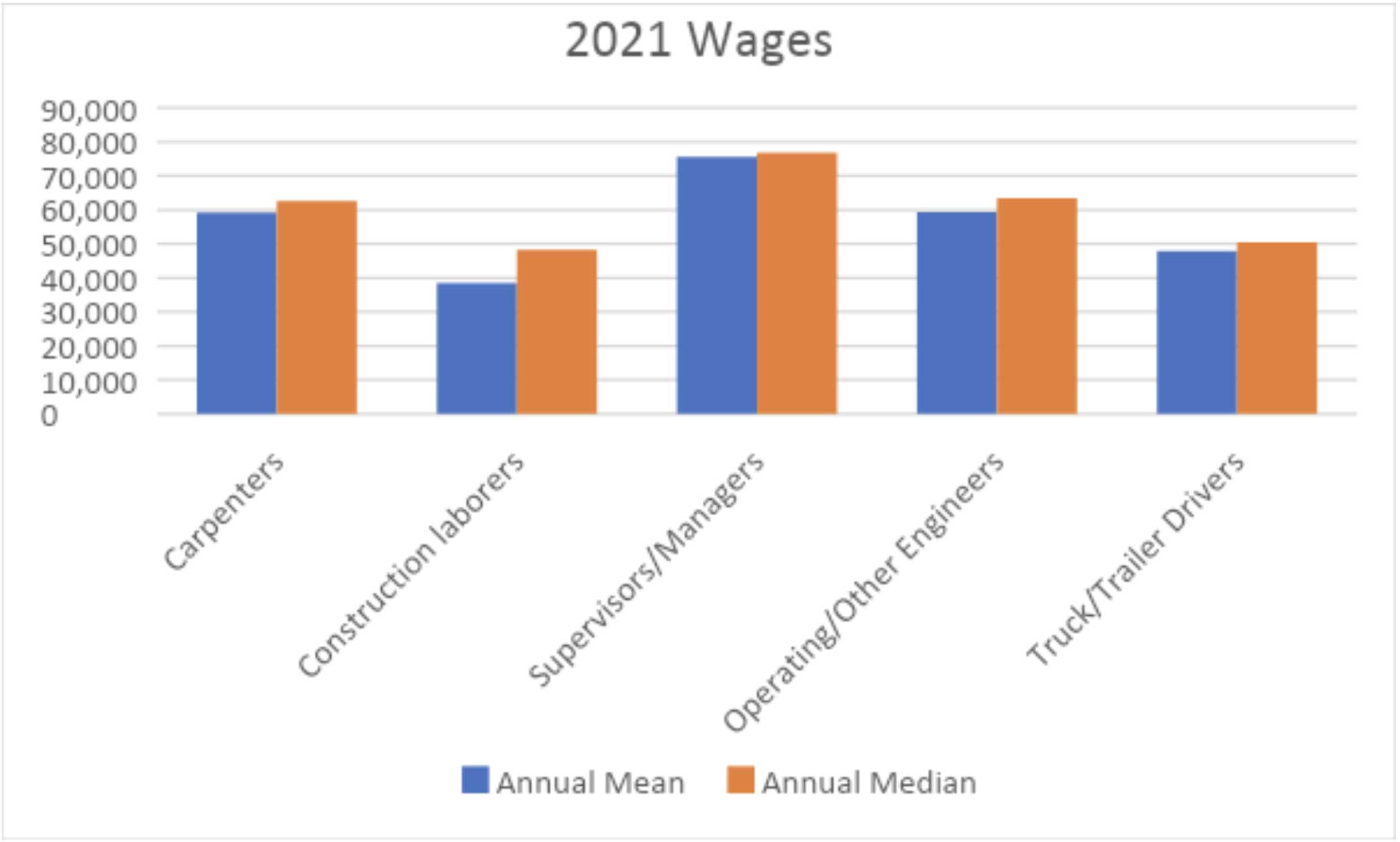Heavy Civil Engineering and Construction Statistics
- 02 November 2022

Heavy Construction means work, consisting of construction activities located on or below the earth's surface including excavation, building foundation, dams, pipelines or construction projects requiring the use of earth moving machinery or equipment along with any work associated with bridges. The work performed may include new construction, additions, alterations or maintenance and repairs.
Civil Engineering is one of the oldest professional disciplines dealing with the design, construction, and maintenance of the physical and naturally built structure or environment. This could include public works such as roads, bridges, canals, dams, airports, sewage systems, pipelines, structural components of buildings and railways. There are many specializations including architectural, environmental, structural, geotechnical, transportation and water resources.
The heavy and civil engineering construction subsector consists of these industry groups:
- Utility System Construction: NAICS 2371
- Land Subdivision: NAICS 2372
- Highway, Street, and Bridge Construction: NAICS 2373
- Other Heavy and Civil Engineering Construction: NAICS 2379
In this blog we would like to share some of the labor statistics for the heavy civil construction space as reported by the U.S. Bureau of Labor Statistics. The following tables present an overview of the heavy construction industry including the number of jobs, data for occupations common to the industry, and projections of occupational employment change.


The latest industry averages of hourly earnings and weekly hours are shown. In addition, recent hourly and annual earnings are shown for occupations commonly found in heavy and civil engineering construction.



Workplace Trends: This section presents data on the number of establishments in heavy and civil engineering construction.

Vizzn is a suite of highly innovative software solutions for the heavy construction industry.
Vizzn’s project management tools assist with everything from estimating, dispatching, scheduling, job-site logistics, construction management, extra billings, environmental and quality control; that can be used together or as a stand-alone solution.